Household Water Safety: Protecting the Family
|
Fun Fact: Americans drink more than one billion glasses of tap water daily! Clean drinking water is a vital resource. Infrastructure in the modern community is designed to make drinking water easily available by a well regulated water distribution system. We need only walk to the nearest sink to enjoy healthy drinking water, without even questioning its safety. By law, water suppliers must deliver safe drinking water. But anything can happen after the water flows into a customer's plumbing system. It's important to understand that the distribution system and all connected customers are threatened when any plumbing system is connected to chemicals, pathogens, bacteria, or other contaminants. Unhealthy substances can flow back into the drinking water during a reverse flow incident. Reverse flows of water happen more often than we might know. Potentially dangerous cross-connections can even exist within our own homes. The following article seeks to address these issues. |
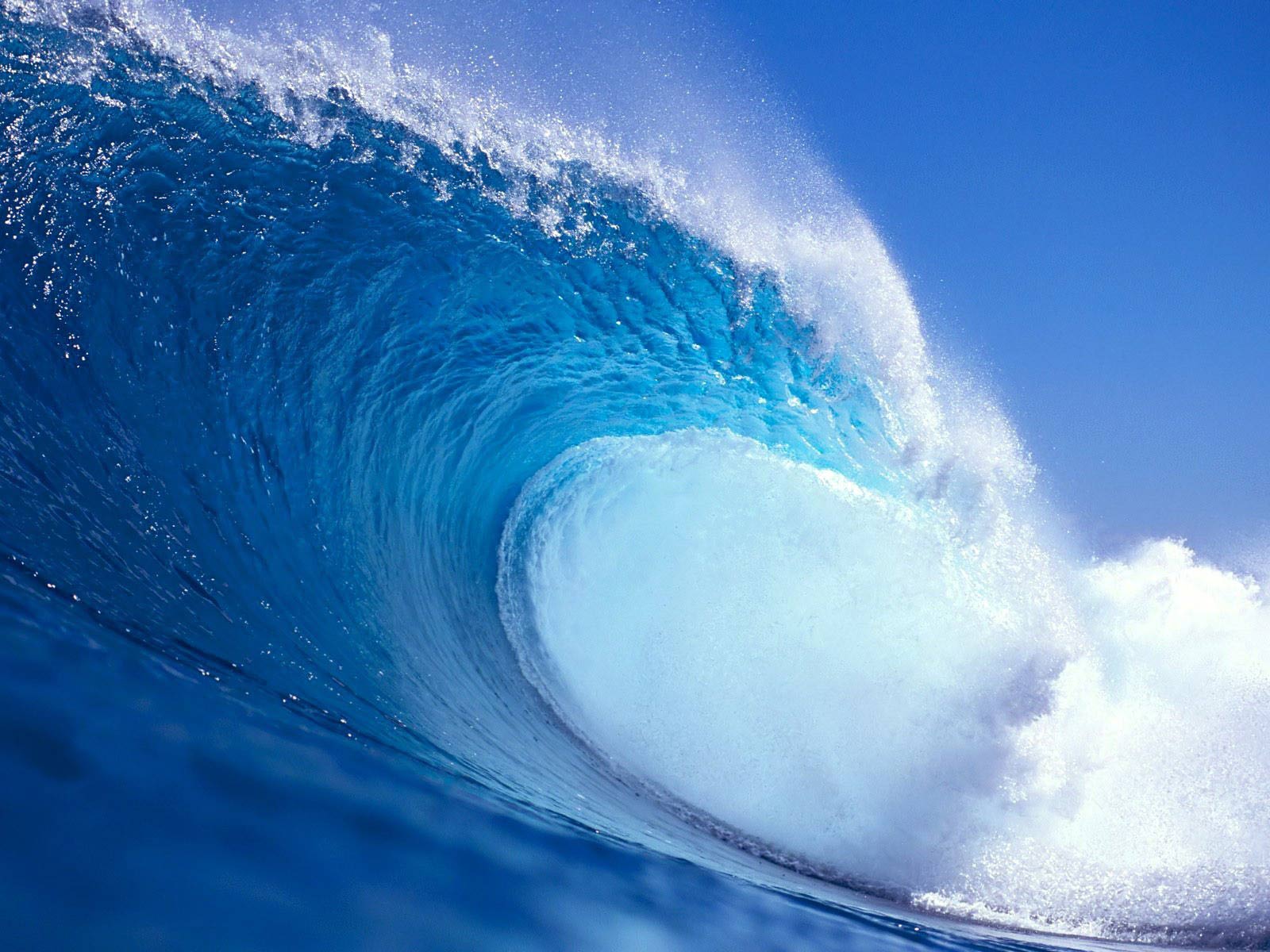 |
Backflow is the reversal of normal water flow direction, which is from the supplier to the end user. What about the home plumbing system? Can backflow occur within our home and contaminate our own water? YES. Although protections are built into household plumbing by the Uniform Plumbing Code, it is important to be informed about the potential hazards. Household cross-connections, like all others, can be eliminated or protected. Following are some of the most common cross-connections and some ideas to help you protect your family. |
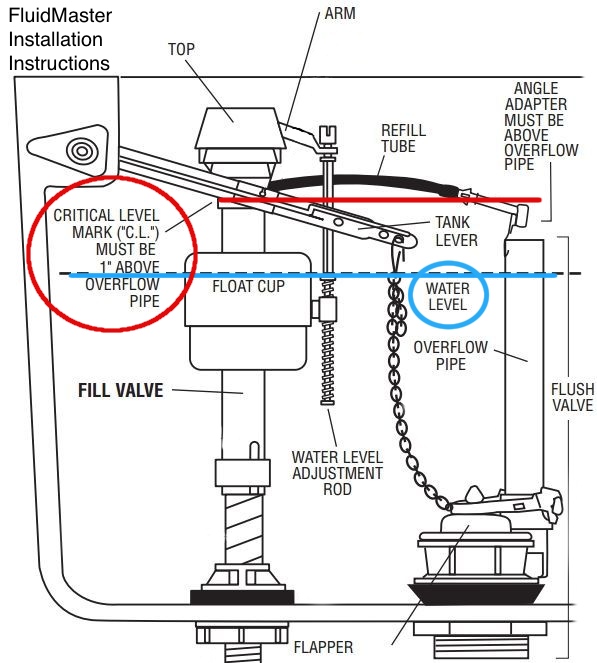 |
The most common direct cross-connection to a health hazard in the home is an improperly set up toilet. Ensure all toilet fill valves are air-gapped to prevent backsiphonage of tank water, chemicals, and bacteria into the household plumbing system. Ensure the Critical Level mark is 1" above the top of the overflow pipe and the refill tube discharge is above the overflow pipe. |
Irrigation Sprinkler Systems should have either: one properly installed atmospheric vacuum breaker (AVB) per zone; or a pressure vacuum breaker (PVB) upstream of the whole irrigation system. Proper AVB installation is: vertical orientation at least 6" above the highest sprinkler head in the zone, and not pressurized for more than 12 hours in any 24 hour period. Proper PVB installation is: vertical orientation at least 12" above the height of the highest sprinkler head in the system. Swimming pool fill lines should be protected with a PVB or a Reduced Pressure Principle backflow preventer. |
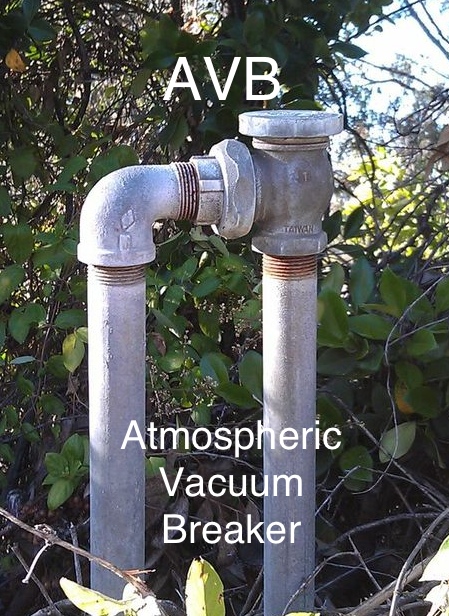 |
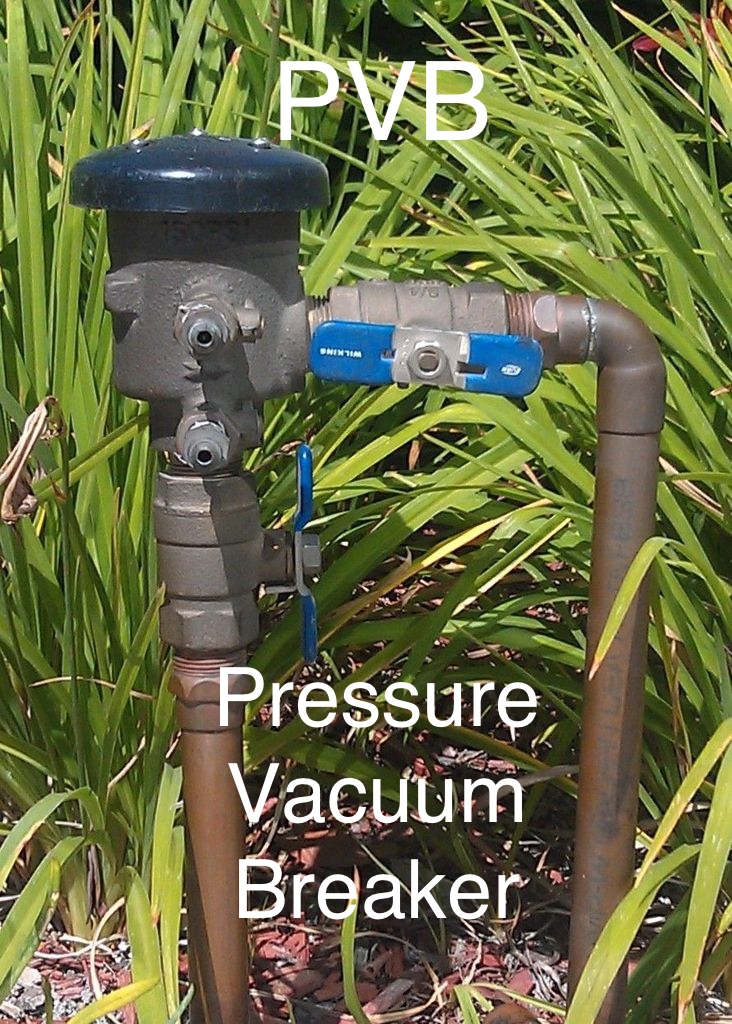 |
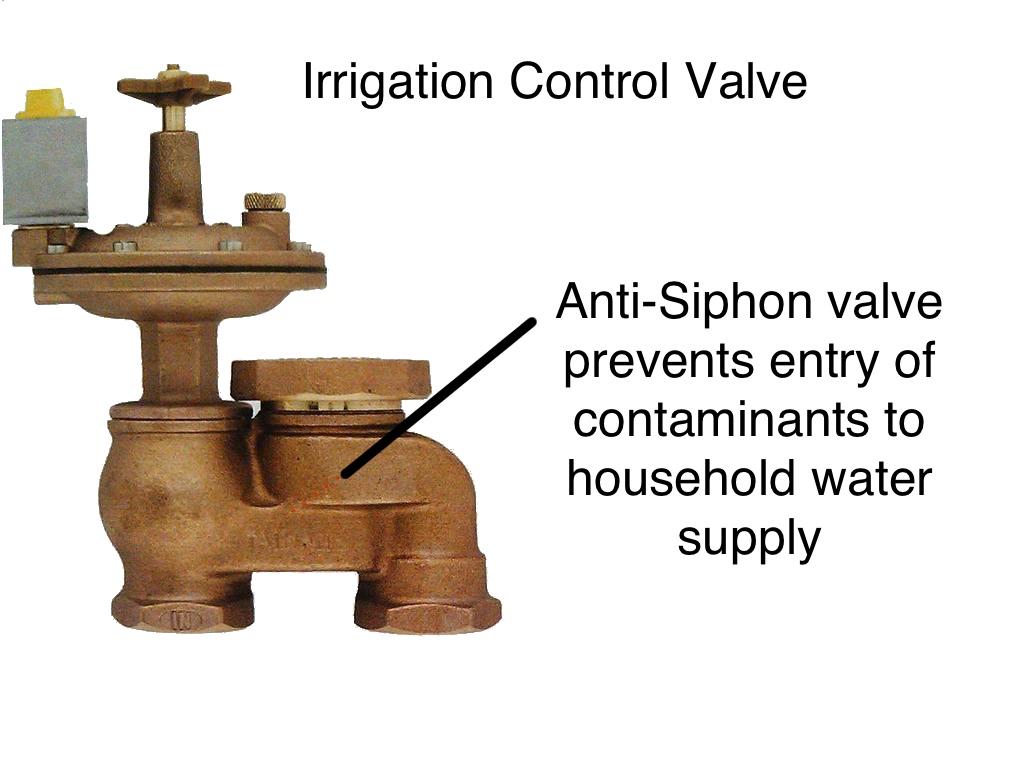 |
A hose bibb vacuum breaker is a small, inexpensive device designed to prevent reverse flow of contaminants through a garden hose. Family health can be threatened during an incident such as what happened in New Jersey when a water main break caused the poison chlordane to be sucked out of an exterminator's barrel, through a hose and into the drinking water pipes of the home. |
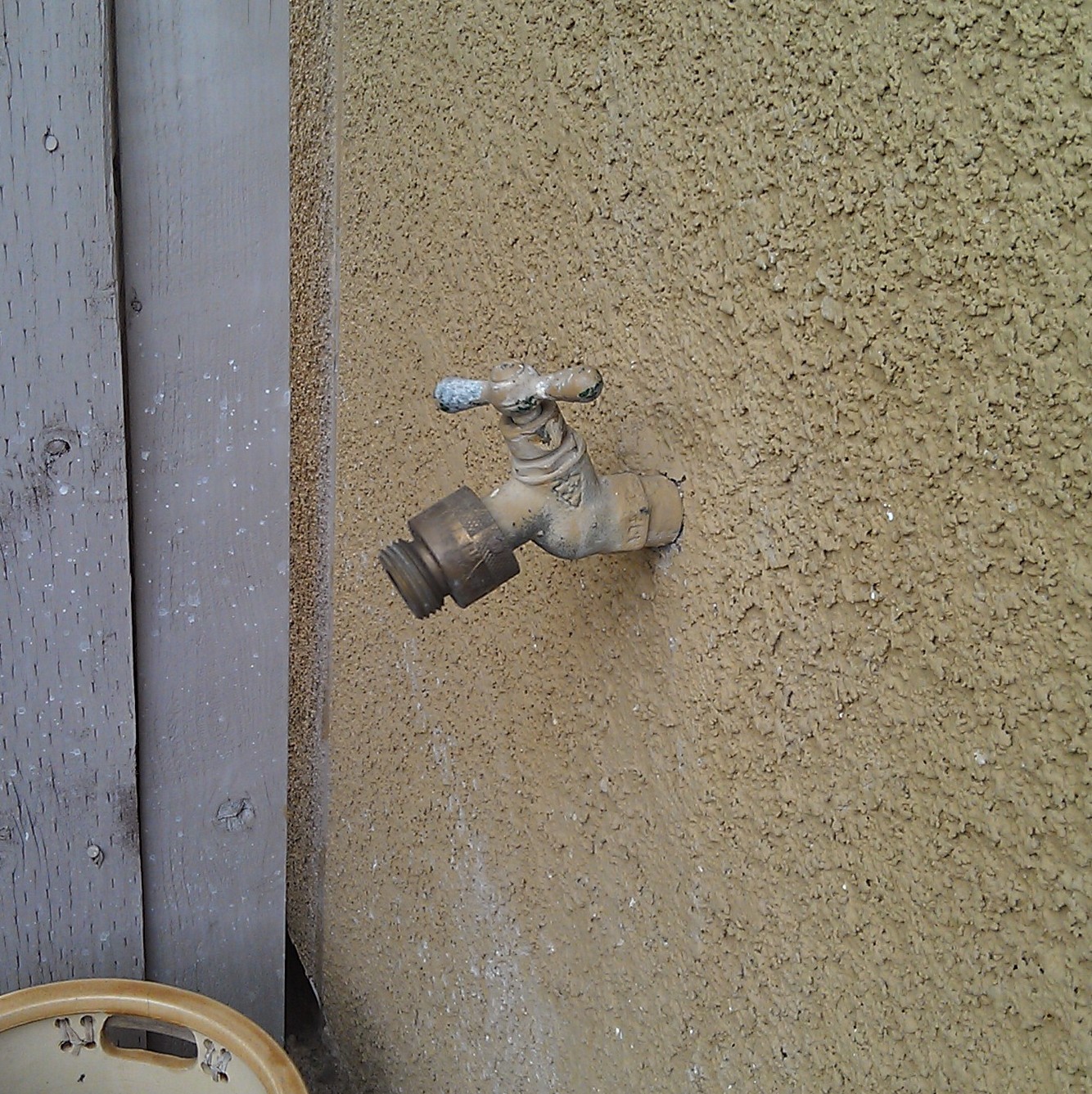 |
Garden hoses are commonly (but inappropriately) left unattended and submerged while filling or flushing pools, ponds, tanks, etc. Each hose bibb should have a vacuum breaker permanently attached. Laundry sinks/tubs should not have hoses connected to the faucet. The outlet of the faucet should be at least one inch above the top (overflow) of the sink. This creates an air gap to prevent pollutants or contaminants from the sink being backsiphoned into the household plumbing system. |
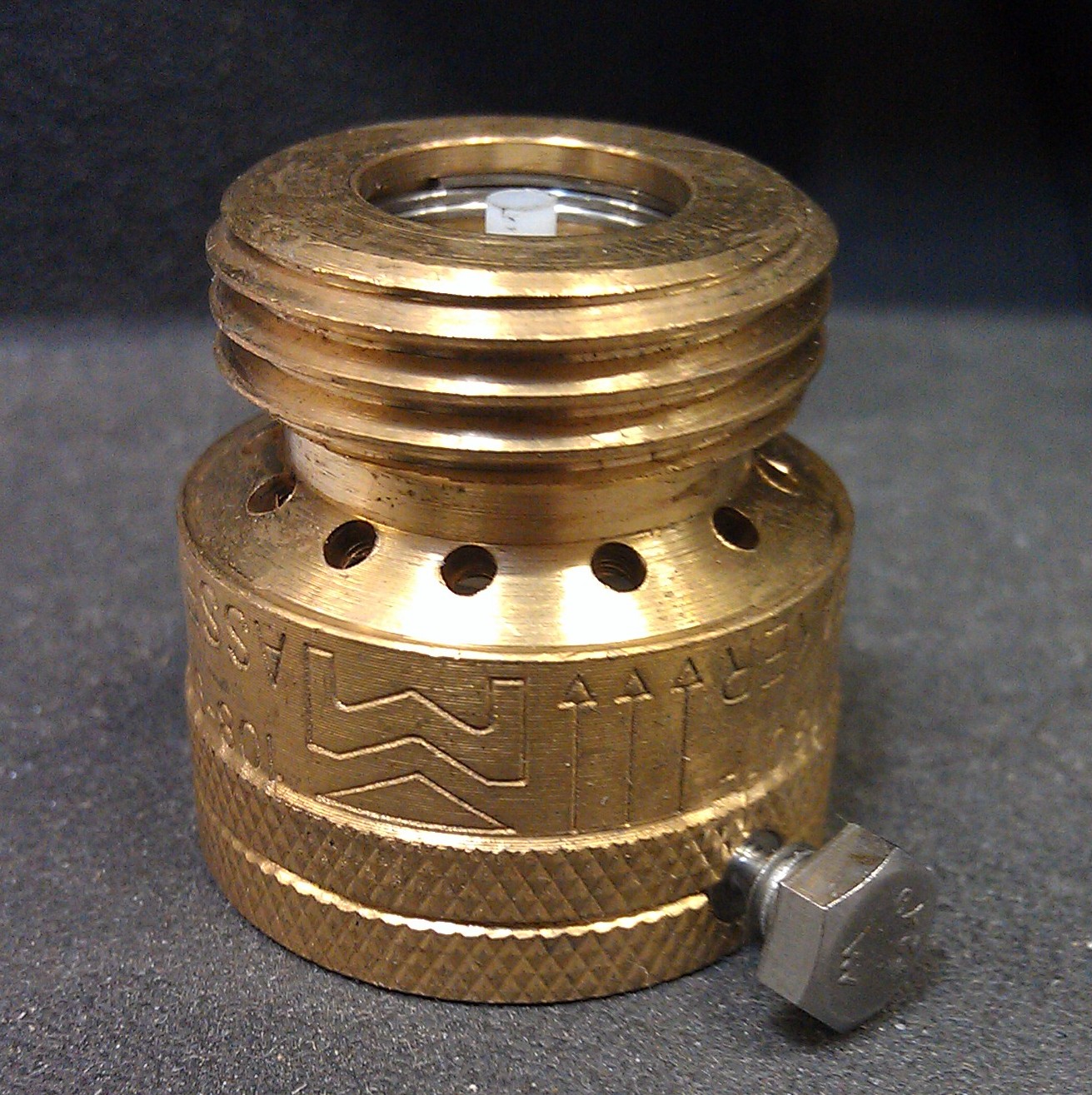 |
Untreated secondary water sources such as wells must always be kept separate from the drinking water system. If there is a connection, the household system must be protected from the secondary source by a reduced pressure principle backflow preventer. The assembly must be tested and maintained regularly. The water district will also require an RPP at the meter. |
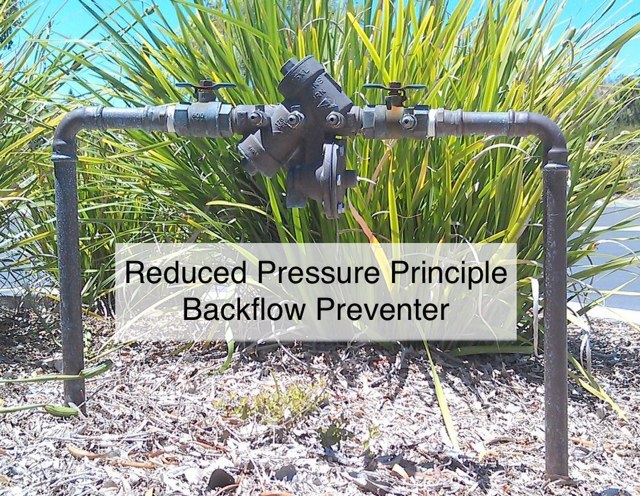 |
| If you lack training or skill in any of this work, seek a licensed, insured trade contractor. Our kids, pets and neighbors will thank us for doing our part to ensure safe water. |



